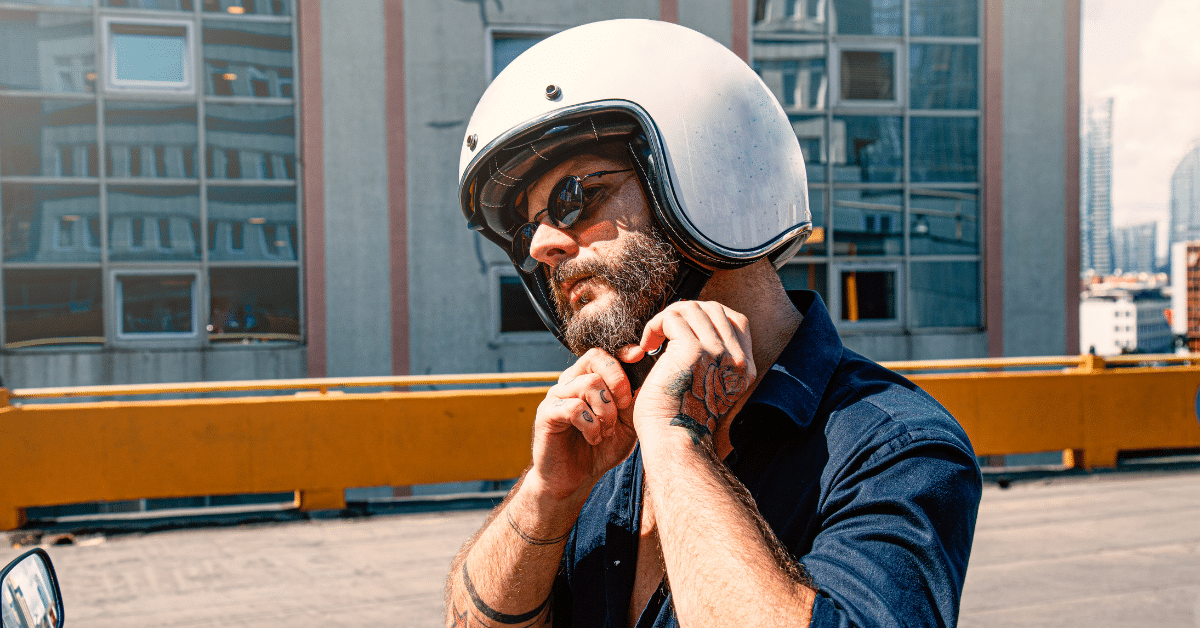Wearing a motorcycle helmet is one of the most important safety measures you can take while riding. Helmets provide necessary protection to prevent severe head injuries during crashes. Additionally, helmets reduce the risk of death in motorcycle accidents significantly.
However, understanding how helmets work can help you realize the real-life importance of helmets and choose the correct helmet for your needs. Read on to learn a few motorcycle accident helmet statistics and how helmets work.

Motorcycle Accident Helmet Statistics
Nationwide data supports the notion that wearing a helmet is essential to your safety as a motorcycle rider. According to data from the National Highway Traffic Safety Administration (NHTSA), more than 25,000 lives have been saved by wearing motorcycle helmets since 2002.
Additionally, wearing a helmet is about 37% effective in preventing motorcycle fatal accident injuries. Still, national helmet use was only 70.8% in 2019.
There’s no good reason not to wear a helmet. Wearing a safety helmet could make the difference between life and death while riding your bike.
Types of Motorcycle Helmets
Motorcycle helmets come in several styles and designs. Here are the most popular types of helmets:
- Full-face: These helmets offer the most coverage, surrounding your head, face, and neck.
- Open-face: Also known as ¾ helmets, these helmets cover all areas of your head except for your face.
- Modular: These helmets are a cross between a full-face and open-face helmet, as they allow you to flip up the chin bar and visor.
- Half: These helmets cover the top and back of your head, leaving the sides and front exposed.
We recommend choosing a full-face helmet to ensure maximum protection of your head and face. However, if you find full-face helmets too constraining or uncomfortable, choosing another helmet on the list is better than wearing no helmet at all. All of these helmets can provide life-saving protection during a motorcycle crash.
Parts of a Motorcycle Helmet
Helmets consist of several layers and parts to maximize protection for your head. Here are the typical parts of a helmet:
- Outer shell: Most helmets feature an outer plastic shell that provides sturdy resistance and protection upon impact in a crash. Day to day, these plastic shells can also protect your head from rocks or branches you may encounter while riding.
- Impact-absorbing layer: Next, many helmets feature a foam impact-absorbing layer that gives your head some space to move upon impact from a crash. This EPS foam layer absorbs shock and displaces energy to prevent head injuries.
- Chin strap: Full-face helmets include a chin strap or tension system that secures below the chin. This strap helps keep the helmet on your head and contributes to full-face protection. Most chin straps utilize a woven material to enhance comfort and wick away sweat.
- Comfort layer: The comfort layer is the helmet layer your head rests against. This layer typically consists of a cloth-covered foam with open-cell air pockets to keep your head cool.
- Face shield: Full-face helmets also include a clear plastic face shield that protects your eyes and nose from bugs, rocks, and debris while riding.
- Cheek pads: Many helmets include cheek pads, which are foam pieces that rest against your cheeks. These pads offer additional protection and help keep your helmet secure on your head.
While helmets include several materials and parts, most motorcycle helmets weigh less than three pounds, making them comfortable to wear on a long ride.
As a motorcycle rider, wearing a motorcycle accident helmet is one of the primary safety standards you should follow. However, you can still experience serious injuries in a motorcycle accident while wearing a helmet.
If you’ve recently been injured in a motorcycle accident, contact our Law Tigers team today at 1-888-863-7216 to schedule a free case evaluation.



